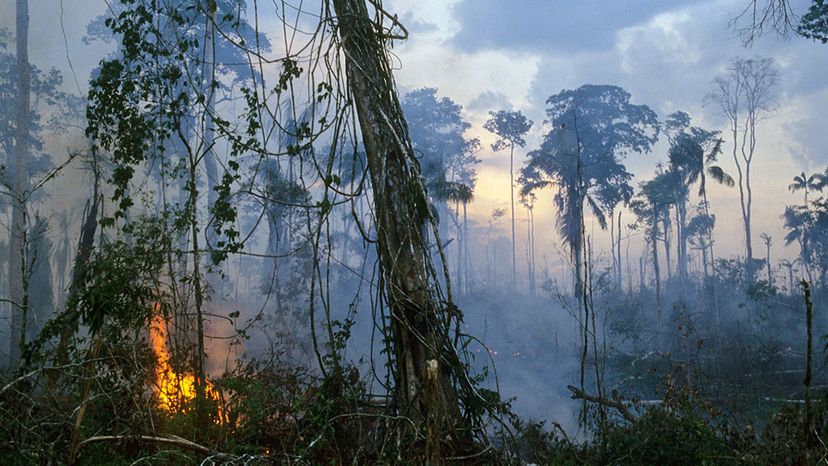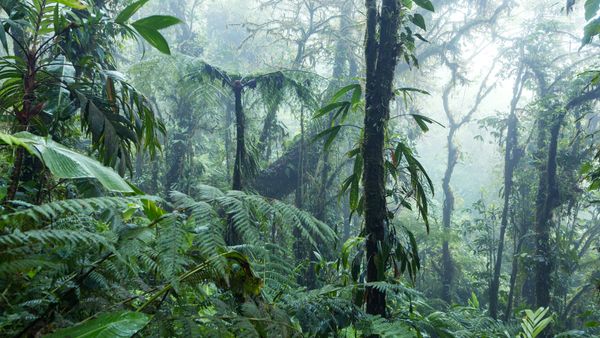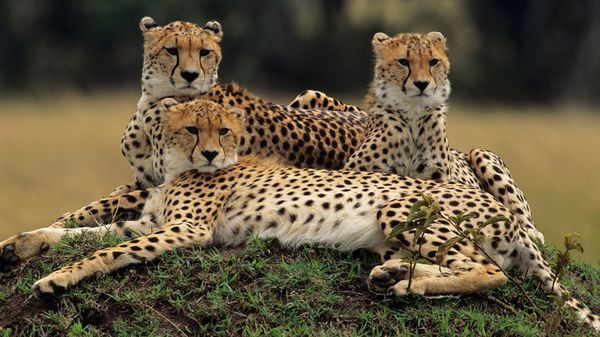
Editor's note: This story was last updated on Aug. 23, 2019.
The Amazon is under attack. It's not a pack of armed guerrillas marching through the trees or a squad of fighter pilots dropping bombs that are wiping out the world's largest rainforest. It's a perfect storm of climate change and industrial activity that's effectively drying out the place, with two recent droughts helping to speed up the process. While there's still time before the world's largest rainforest is completely eliminated, it's probably a good idea to understand the stunning impact that losing the Amazon would have on our global climate and food supply.
Advertisement
Spanning 1.4 billion acres (56.7 million hectares), the Amazon rainforest stretches across nine South American countries and is home to about 10 percent of the world's animal species. At the heart of the region is the mighty Amazon River, a tributary that's 300 miles (483 kilometers) wide and that sends up to 500 billion cubic feet (14.2 billion cubic meters) of water into the Atlantic Ocean every day. The rainforest sprung to life about 10 million years ago, when the river began flowing eastward. Today, it's home to a diverse array of plant and animal life and several different ecosystems, including forests and savannas. The Amazon currently accounts for more than half of the planet's remaining rainforests [source: Butler].
It's believed that about 20 percent of the Amazon has been lost since the mid-1970s. Although conservation efforts have helped stem the tide of deforestation brought on by on mechanized agriculture, the rise of soy farms, logging activity and the clearing of trees for cattle grazing, experts say the destruction continues. Throw in a dash of climate change – higher temperatures reduce rainfall, cause drought and make the rainforest ripe for fires – and you have a recipe that could wipe out as much as 85 percent of the Amazon as we know it. That would be a bad thing not only for the South America regions that depend on the forest for its rainfall, but also for folks around the world [sources: Kelly, Schiffman, Tuthill, Butler].
Here's how the forest generates rain: Plants release moisture through their leaves in the form of vapor, which then enters the atmosphere and forms clouds that produce precipitation. If the trees and plants are destroyed, that means the area around where the rainforest sits – a region that depends on water from the Amazon for up to 70 percent of its economic activity – is likely to dry out. Princeton University researchers have also found that the shriveling of the rainforest would mean significantly less rainfall for North America's coastal northwest region and approximately 50 percent less snow for the Sierra Nevada. That's less water for the folks who live there, not to mention the animals and crops they eat [sources: Schiffman, Tuthill, Butler].
The rainforest's trees also help remove harmful carbon dioxide from the atmosphere and convert it into oxygen. Fewer trees equal more of the gas that experts believe is behind global warming [source: American Institute of Physics].
If the impact on the environment isn't enough, consider what losing the rainforest could do to your immediate well-being. The Amazon currently produces up to 25 percent of the plants used in modern medicines [source: Butler].
Advertisement

